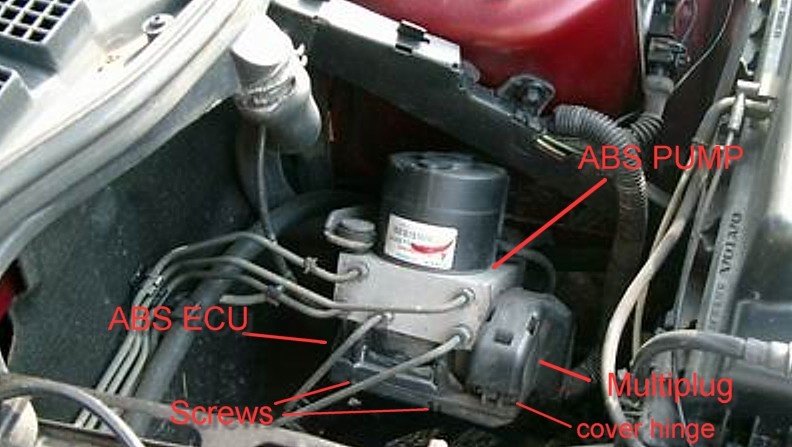Anti-lock braking system (ABS) is an automobile safety system that allows the wheels on a motor vehicle to maintain tractive contact with the road surface according to driver inputs while braking, preventing the wheels from locking up (ceasing rotation) and avoiding uncontrolled skidding. in this article, I summarize several common questions you’ll encounter concerning the anti-lock braking system, hope it can somehow be helpful.
1.How can I know if my car is equipped with ABS?
ABS has become as either standard or optional equipment for most newer cars. The most direct and simplest way is to consult your owner’s manual. Also, you can also find the answer by checking the instrument panel. If your car comes with the ABS equipment, there is an ABS indicator lies on the panel that shows yellow light when the ignition is turned on.
2.When my ABS is activated, I feel a rapid pulsation in my brake pedal, is it normal?
The answer is definitely “YES”. Actually, this is the ordinary experience you’ll have when your ABS is in operation. It comes from the rapid opening and closing of the valves located in the braking lines to change brake pressure going to each brake assembly. At the same time, the valves may also make a grinding, scraping or buzzing noise. Don’t take your foot off the brake pedal.
3.Do cars with ABS stop more quickly than cars without?
ABS may shorten stopping distances on wet or slippery roads and most systems may shorten stopping distances on dry roads. Yet, it is designed to help drivers maintain control of the vehicle during panic stops and other adverse driving conditions rather than shortening stopping distance. Actually, on very soft surfaces, ABS may actually lengthen the distance such as on surfaces with gravel or unpacked snow. Whatever the situation is, it is the diver’s responsibility to maintain a safe distance from the vehicles ahead.
4.What the driver should do when his/her car starts to skid?
First, do not pump the brakes. This work should be left to the ABS. In an emergency stop, apply the ABS by simply depressing the pedal firmly if your car has this safety system. Don’t let off the pedal and have some steering control quickly to get back on course. Be aware of the road conditions and make some corresponding adjustments.
5.What happens when anti-lock brakes fail?
If any of the system’s component fails, the anti-lock brake system switches off automatically. It won’t affect the normal working of the brakes as long as the pedal doesn’t fade or sink. You’ll have to pump the brakes quickly in a panic stop, so be vigilant if your ABS fails.
6.How to test the ABS?
Before the testing procedure, remember two points- antilock brake system is speed-sensitive (it will not activate at very slow speeds) and it’s easier to be activated on a wet and slippery surface. Drive your vehicle at a speed above which the antilock brake system activates (usually above 10 mph) and apply the brakes firmly in an obstructed parking lot. Do not pump the brakes to see if the system can prevent the wheels from skidding.
Does the passage above make you have a clearer picture about car ABS? Here I’ll recommend you a very useful diagnostic tool that many car owners find helpful and easy-to-handle. LAUNCH Creader Professional 229, coming with Full Diagnosis Function and more appliction like Engine Oil Reset and ABS Bleeding, it’ll become your ideal choice in terms of car diagnostics. If you want to get to know the tool further, please click the tool image below, we provide detailed information about it on our Home Site. Have a nice find-out!

Common Questions and Answers about ABS
by
Tags:
